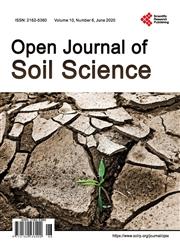Natural and Anthropic Sources of Arsenic in the Groundwater and Soils of the Mekong Delta
引用次数: 3
Abstract
Human exposure to arsenic (As) is primarily through drinking water and food ingestion. Arsenic is naturally present in the environment and has been known as “the king of poisons” since the Middle Ages. It is mutagenic, tera-togenic, and carcinogenic and approximately 70% comes from ingested food and 29% from water. Once ingested, arsenic can bio-accumulate in the human body or be excreted. Arsenic in groundwater is a main source of As in humans and the two arsenicals most abundant in water are arsenite (+3 oxidation state) and arsenate (+5 oxidation state). In order of toxicity from the most toxic to least toxic are arsines, arsenites, arsenoxides, arsenates, penta-valent arsenicals, Arsenic compounds, and metallic arsenic. Arsenic accumulates in the body when ingested in small doses. It often takes decades before physical symptoms of As poisoning show. While As is element normally found in the human body, it is highly toxic in excess amounts. The lethal dose for rates is 48 µg/L which translates to 125 mg for a middle-aged male. The maximum safe limit for As ingestion for an average Vietnamese middle-aged male is 220 µg per day. This lethal dosage puts As in a highly toxic category in food and toxicology. Most of the As in the Mekong Delta groundwater is from natural alluvial sediment sources. Other anthropic sources include the burial of millions of Vietnamese with elevated As levels since 1962, industrial湄公河三角洲地下水和土壤中砷的自然和人为来源
人类接触砷主要是通过饮用水和食物摄入。砷自然存在于环境中,自中世纪以来就被称为“毒药之王”。它具有诱变性、致畸性和致癌性,大约70%来自食物,29%来自水。砷一旦被摄入,就会在人体内生物积累或排出体外。地下水中的砷是人体砷的主要来源,其中砷酸盐(+3氧化态)和砷酸盐(+5氧化态)是水中含量最多的两种砷化合物。按照毒性由大到小的顺序依次是砷、亚砷酸盐、砷氧化物、砷酸盐、五价砷、砷化合物和金属砷。小剂量摄入砷会在体内积累。砷中毒的生理症状通常需要几十年才能显现出来。虽然砷是一种正常存在于人体内的元素,但过量会产生剧毒。致死剂量为48微克/升,换算成中年男性为125毫克。越南中年男性平均每日摄入砷的最大安全限度为220微克。这一致死剂量使砷在食品和毒理学中属于剧毒类别。湄公河三角洲地下水中的As大部分来自天然冲积沉积物。其他人为来源包括自1962年以来,数百万越南人因砷水平升高而被埋葬,工业
本文章由计算机程序翻译,如有差异,请以英文原文为准。
求助全文
约1分钟内获得全文
求助全文

 求助内容:
求助内容: 应助结果提醒方式:
应助结果提醒方式:


